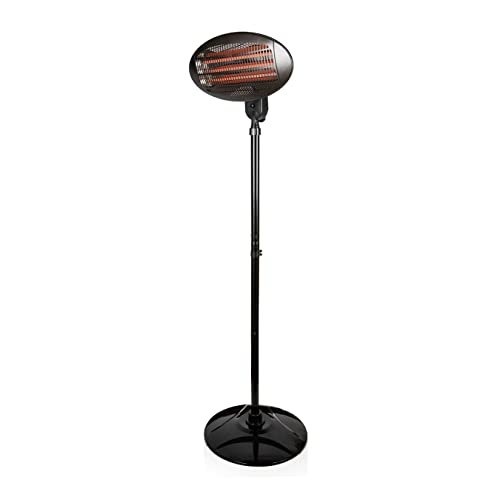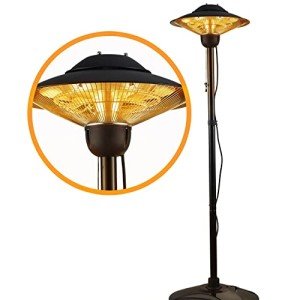 Gas Patio Heater Regulator
Gas Patio Heater RegulatorIt's crucial to know how to use a propane
patio heater gas cylinder heater if need to stay warm during the cold weather. Matthew Griffith, prevention section chief of Montreal's fire department, said that consumers should choose items that have safety certifications.
It's also essential to ensure that no combustible materials are nearby and that the
garden patio gas heater heater is correctly attached.
Pressure Regulator
Gas regulators are simple mechanical devices that we use in our cars and homes every day without giving them a second thought. Their invention, which took place 135 years ago, has changed the method in which propane and natural gas are used for cooking, heating, and oxy-fuel welding. There are a number of variations in the design of regulators however their primary purpose is the identical. The regulator utilizes an element that senses pressure, typically a dialythm made of fabric, to control a valve's location and limit the flow of gas.
The diaphragm is connected to the stem of the valve using rods that go down through the set spring, through the diaphragm, and finally into the valve. This mechanism senses the gas pressure in the home or pipeline and adjusts the position of the valve plug to match the demand. As the gas consumption in the home decreases as does the pressure between the regulator and the house. The diaphragm deflates downward and the valve plug is moved closer to the orifice in order to restrict the flow. As the demand for gas grows in the home the valve will open more, increasing the flow.
The valve plug is closed until the demand of the house decreases. The valve is then opened to increase the flow. This process is known as size and is the basic operation of the regulator.
When the valve is opened it creates pressure in the main chamber, which is connected to the hose's outlet port via venturi tubes. The pressure is controlled by changing the screw or handle on the outside of the regulator. When the screw is rotated counterclockwise, it increases the pressure. If it is turned clockwise, it reduces the pressure.
When selecting a pressure regulator, keep in mind that the nominal maximum and minimum pressure is determined by commercial standards and not the pressure of the gas in the supply line. The regulator must also be compatible with the hose you are using. Make sure you choose a hose that is whistle-free. It should have alternating rings with different sizes. This will stop the resonant sounds from building up along the length.
Thermocouple
Thermocouples operate on the premise that metals of different composition when in contact at their ends can produce the voltage even if they are operating at extremely different temperatures. They are used to detect the temperature difference between two points in a system and convert this data into an electrical signal that can be read by a thermocouple meter or other instrument. Thermocouples are superior to other sensors, such as thermistors. They can measure extremely high temperatures and work in harsh environments.
A pair of metals that are dissimilar is joined at one end of the sensor, forming the measuring (aka hot) junction, while the other end is kept at a constant temperature, known as the reference (aka cold) junction. Thermocouples are passive devices meaning they do not require power to operate. The voltage generated is proportional the temperature difference between the measuring junction and the reference junction. The thermocouple manufacturers and organizations that offer metrology standards, such as NIST, provide reference tables for the function E (T). displaystyle scriptstyle e(T) for each type of thermocouple.
There are three kinds of thermocouple connections: exposed grounded and welded. The exposed junction style protrudes out of the protective sheath and provides the fastest response time. A thermocouple grounded is recommended for use in environments with corrosive elements. A thermocouple welded to a wire is physically insulated from the sheath with mgO powder to prevent the penetration of gas or moisture that could lead to errors.
The thermocouple that is welded is also a benefit in being more resistant to vibration. It is recommended for use in harsh environments, and with pressures of up to 3000 psi. A thermocouple that has been damaged is usually the result of an insufficient polarity. If the sheath does not appear to be polarized, the two ends of the thermocouple be in a state of discordant voltages at the measurement junction which could result in an inaccurate reading and even damage the instrument. A sensor that is not properly calibrated or installed can cause a malfunctioning thermocouple.
Thermostat
Contrary to electric heaters, which need to be wired directly into the wall
amazon gas patio heater patio gas heater for sale heaters are portable and utilize propane or natural gas cylinders to fuel. Thermostats regulate the flow energy into these cylinders to ensure that they do not overflow but still provide warmth when required. The thermostat is able to detect the temperature of the air passing over it. The thermostat also senses when the room has cooled down to a comfortable temperature and turns off the heating.
The most popular type of thermostat is a digital one. It makes use of a microcontroller to convert a changing electrical resistance into a temperature reading. It is able to accomplish this more accurately than earlier mercury switch thermostats that used a mercury coil that had three wires that would move depending on the temperature. This allowed it to tilt a mercury switch that was connected to the electrical circuit of an air conditioning or heater unit, turning it off or on.
Mechanical thermostats are another kind. It is an cylinder of small size filled with wax that starts to melt at a temperature of maybe 180 degrees F (different thermostats open up at different temperatures). When the wax is hot, a rod connected to the thermostat opens the valve. As the room cools, the wax expands and the rod gets pulled back into the cylinder, closing the valve.
You can also program thermostats to change the temperature at various times during the daytime. This allows you to save energy by setting your heating to go on and off during times of work or asleep, instead of being constantly on. You can also set your thermostat to come on sooner so that you can get home to a comfortable temperature. Thermostats are also usually equipped with an element known as the heat anticipator, which prevents the heater from turning off too early. This is because parts of the home often reach the set temperature before the thermostat does.
Pilot Light
Many newer heating systems, homes, and furnaces are no longer completely of pilot lights. However older homes still make use of them to ignite gas in the burner chamber. If the pilot light is ever snuffed out, it's vital to know how to light it safely.
A pilot light produces tiny flames that heat a thermocouple. This thermocouple generates electricity, and keeps the gas valve open. If the pilot flame goes out the thermocouple cools and ceases to produce electricity, closing the gas valve. Pilot lights are utilized on the majority of natural gas and propane appliances, like water heaters.
To relight a pilot light, you must first turn off the gas on the appliance. The next step is to take off any doors or panels that may be blocking the access to the pilot light. Follow the directions on the front of the unit to open the tube for the pilot light. Once you've re-lit the pilot light, return the knob on the gas valve to the "on" position.
The main reason to leave a pilot light on is for safety reasons. If it's accidentally shut off the gas constantly escaping from the pilot light tube can be accumulating in your home until a spark from the cigarette lighter or static electricity ignites it, causing an explosion. Pilot tubes are designed to include an inbuilt cutoff valve to stop this from happening.

A constantly burning pilot light is not just hazardous, but it also wastes energy. A pilot light can burn between $7 and $18 worth of gas per month, according to numerous studies. The wasted fuel also puts more strain on the air cooling system in summer. A pilot light may draw spiders, which can spin webs and block the pilot tubes. A flame that is constant can release small amounts of the compound Mercaptan, which is the cause of the rotten-egg smell in
natural gas gas patio heater gas. If you are ever concerned about these issues, you should consider buying a remote-controlled gas fire or replacing your fireplace with a more efficient and modern design.

 Gas Patio Heater Regulator
Gas Patio Heater Regulator A constantly burning pilot light is not just hazardous, but it also wastes energy. A pilot light can burn between $7 and $18 worth of gas per month, according to numerous studies. The wasted fuel also puts more strain on the air cooling system in summer. A pilot light may draw spiders, which can spin webs and block the pilot tubes. A flame that is constant can release small amounts of the compound Mercaptan, which is the cause of the rotten-egg smell in natural gas gas patio heater gas. If you are ever concerned about these issues, you should consider buying a remote-controlled gas fire or replacing your fireplace with a more efficient and modern design.
A constantly burning pilot light is not just hazardous, but it also wastes energy. A pilot light can burn between $7 and $18 worth of gas per month, according to numerous studies. The wasted fuel also puts more strain on the air cooling system in summer. A pilot light may draw spiders, which can spin webs and block the pilot tubes. A flame that is constant can release small amounts of the compound Mercaptan, which is the cause of the rotten-egg smell in natural gas gas patio heater gas. If you are ever concerned about these issues, you should consider buying a remote-controlled gas fire or replacing your fireplace with a more efficient and modern design.